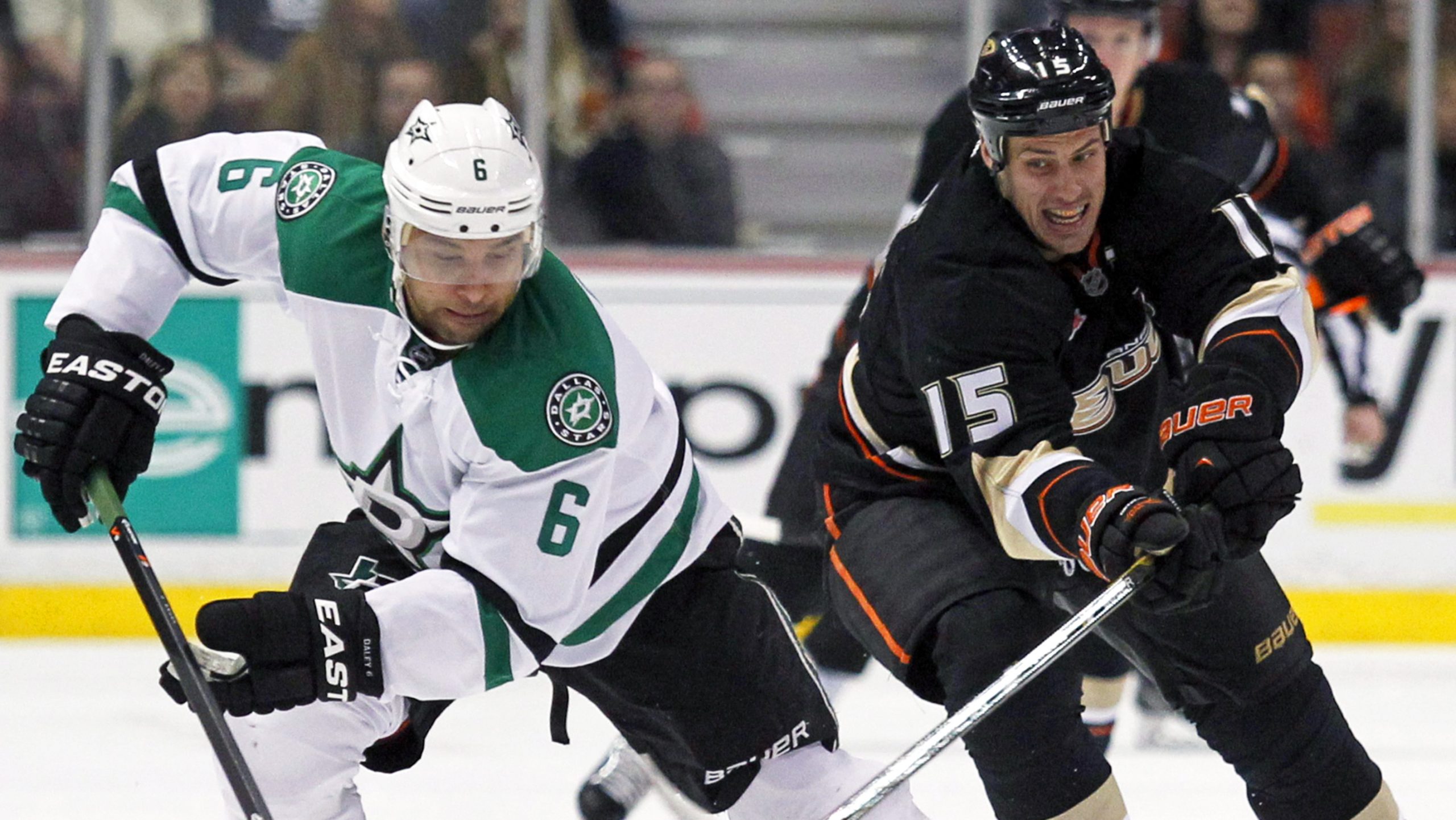Anaheim raced out to a 4-0 lead against Dallas Wednesday and hung on for a 4-3 win. One win down, 15 to go for the Stanley Cup? It won’t be easy.
If you look at the regular-season standings, the Ducks are one of the Western Conference’s elite. They piled up 116 points, won the West and will have home ice advantage until the Cup final. But despite their place in the standings, they were just an average possession team. At 5-versus-5, the Ducks posted a Corsi% of 50.0 percent, which means that they generate as many shot attempts as they give up. Worse, the Western Conference has four teams that are possession powerhouses: Los Angeles (56.8%), Chicago (55.5%), San Jose (53.5%) and St. Louis (53.1%). If the Ducks make the Cup final and the Eastern Conference plays out as expected, Boston (53.4%) would await.
Since 2007-08, the team with the better regular-season Corsi% has won 54 of 90 playoff series. The results are about the same when the gap is 2.5 percentage points or more, as it will be if Anaheim faces L.A., Chicago, San Jose, St. Louis or Boston. The team with the higher Corsi% has won 28 of those 45 series.
There’s a caveat to that though. Pittsburgh has a 6-3 record in series when it has a regular-season Corsi% at least 2.5 points worse than its opponent. The Pens are special in that Sidney Crosby and Evgeni Malkin are such gifted finishers and creators the usual rules don’t apply. If you exclude the Penguins, teams with a 2.5 percentage-point Corsi% edge win 70 percent of series. With the Ducks facing as many as three series against elite possession teams, it seems like an awful lot to overcome.
And that’s assuming that they get the chance to do it. Despite their win Wednesday night, the Ducks’ first-round opponent might be too much for them. No playoff series this year has a bigger gap in terms of points than the Stars-Ducks matchup. Anaheim finished 25 points ahead of Dallas in the regular season despite a Corsi% that was roughly the same.
How did the Ducks pull it off? Their regulation goal difference of plus-63 was 54 goals better than Dallas’s plus-9. That’s worth about 18 points in the standings. The Ducks were 21 points better than Dallas in regulation, which is well within the range of normal when one team is 54 goals better than the other. Overall, there’s nothing too unusual about Anaheim here.
More than half of the goal difference between these two teams lies in their 5v5 shooting percentage. Anaheim shot 9.8 percent on 1,941 shots. Dallas shot 8.2 percent on 1,934 shots. Anaheim scored 190 5v5 goals. Dallas scored 158. That is a red flag for people familiar with hockey numbers. Both teams have two key forwards and good supporting casts. Dig into it a little bit further, though, and we see the Ducks’ edge in 5v5 goal scoring has come almost entirely from the bottom of the lineup.
I knocked out the seven most used forwards in terms of time-on-ice per game for each team. In Anaheim’s case, that’s Ryan Getzlaf, Corey Perry, Dustin Penner (since traded to Washington), Andrew Cogliano, Daniel Winnik, Saku Koivu and Teemu Selanne. That group of players provided the Ducks with 94 5v5 goals on 784 shots. In Dallas, the seven are Tyler Seguin, Jamie Benn, Valeri Nichushkin, Cody Eakin, Colton Sceviour, Erik Cole and Rich Peverley. They scored 94 goals on 853 shots.
The astute observer will note that both teams got 94 goals from what we can call their top-six forwards. It’s much different with the players who didn’t get top-six minutes, which we’ll call the bottom-six forwards. Anaheim got 75 goals on 698 shots from its bottom six. Dallas just 46 goals on 592. As a group, Anaheim’s bottom-six forwards shot 10.7 percent to Dallas’s 7.2 percent. Of the 32-goal difference between the teams in 5v5 goals-for, 29 can be attributed to Anaheim’s bottom-six scoring more.
It’s one thing for star forwards to carry a high shooting percentage, it’s another for role players to do it. Anaheim’s bottom six forwards collectively cashed in their 5v5 shots at a better rate than Alex Ovechkin (9.4 percent), James van Riemsdyk (9.3 percent) and Jeff Carter (7.8 percent).
If Bruce Boudreau (who is probably a very good coach) has the power to turn bottom-six forwards into guys who score at elite rates, he’d be the wealthiest coach in the world. He doesn’t. Sometimes you get the bounces, sometimes you don’t. Anaheim’s had the bounces this year, particularly from forwards seven through 12. The music always stops. Even if the Ducks get past Dallas, which is by no means assured, it’s likely that the party will end with something other than a Stanley Cup parade.

